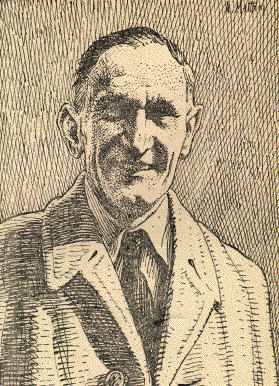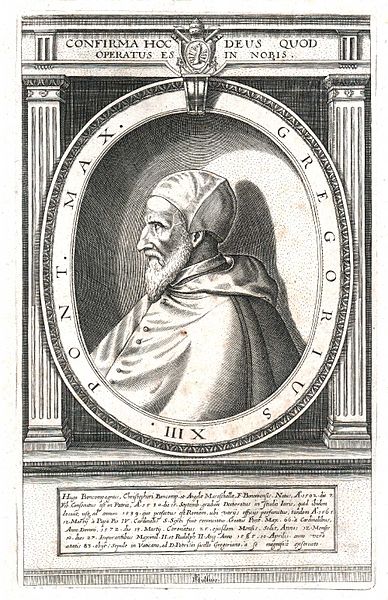Once the affectional bond became the central element of marriage, the rational for limiting it to pairs who would procreate lost its force. Gays want nothing more than to participate in “traditional marriage” thus understood — marriage for the benefit of the marrying partners: meshing a person’s life with someone they love.
You see, very nearly the same thing had been said by the great German historian Oswald Spengler some eighty years earlier:
When the ordinary thought of a highly cultivated people begins to regard ‘having children’ as a question of pro’s and con’s the great turning-point has come … a man’s choice of the woman who is to be, not the mother of his children as amongst peasants and primitives, but his own ‘companion for life,’ becomes a problem of mentalities … When reasons have to be put forward at all in a question of life, life itself has become questionable. Instead of children, [the modern woman] as soul-conflicts; marriage is a craft-art for the achievement of ‘mutual understanding.’ … At the last, only the primitive blood remains, alive, but robbed of it’s strongest and most promising elements.
Please note, that this is the same vision of “companionate marriage,” there is no disagreement between the meaning, only the significance. To Varnell, contragenic marriage allows freedom and autonomy, to Spengler it is death, not only for the race but for the soul as well, yet they are agreed: the modern impulse is irreversibly toward contragenic marriage. The gulf between is both insuperable and it is the gulf that splits the West today. Whether he conceives of himself as such, Varnell is secular, traditionless, and his consciousness is utterly devoid of the pulse of life. While Spengler saw and identified the Varnell type before the end of the Great War (as well as his companion, the "Ibsen woman"), Varnell is unable to perceive Spengler’s deeply mystical understanding, thus we can only talk to Varnell on his terms.
There is a saying among communists, “You can only fight the Moor (Marx) with the Moor.” The idea here was that any argument that wasn’t Marxist was ipso facto invalid. Thus, were I to attack same-sex marriage from a Marxist perspective, it would be impermissible to bring in Christian morality, traditional values, or natural law. I could, however, attack monogamy itself, pointing up that it was merely “petty-bourgeois exclusivity.” Or I could accuse gays who wished to get married of “aping the oppressor” and thus perpetuated their own oppression. Or I could attack the family as a counter-revolutionary artifact within society. A communist could argue for virtually any position, so long as the argument were put correctly. For instance, one could support gay marriage because, by “aping the oppressor” we can make a mockery of monogamy, thus undermining the whole reactionary concept of “family.” See how it works? Because there are no fixed points in the Marxist moral universe, we can work it both ways as long as we use a Marxist argument.
I bring this up because we can only fight the secular with secular arguments. Bourgeois liberals are no more inclined to accept arguments based upon Christian morality, traditional values, or natural law than communists and it is foolishness even to bring this up in public debate. Certainly, homosexual unions are immoral, alien to Western traditions, contragenic and thus unnatural, but none of this counts in a secular debate. We must attack same-sex unions for practical reasons if we wish to score a practical victory. We live in a society that plays the game of politics by secular rules and we can only win if we fight on secular ground.
Let us begin by taking the Homosexualists at their word and concede that “the government has no business regulating what I do in my bedroom.” But let us take this further and insist that the state has no compelling interest in promoting “stable relationships” either. It makes no difference to society if homosexual couples are monogamous or not, since there is no complicating issue of children involved. To those that point out that promiscuity spreads disease, we can only answer that allowing marriage to reduce promiscuity is a classic case of “pushing on a string.” After all, heterosexuals still get syphilis even though they have always been able to marry. Let us assert dogmatically: the state has no interest in people’s sex lives unless this coupling has the potential to produce children.
Let us insist that it is self-evident that the only justification for the financial and social benefits of marriage is that married couples are raising the next generation of citizens. Plainly then, same-sex unions would pose a burden upon our social resources with no corresponding societal gain. Let us put aside the issue of sacramental marriage (as there will always be some church who will marry queers) and get to the real issue of the tangible benefits of marriage. There are tax breaks, inheritance accommodations, insurance policies, and pension rights at stake here and these represent real social costs that should be reserved for a group producing a real social good, not just any two people who like to sleep together. Let us defuze the “fairness” issue by stressing the social cost/benefit analysis: is it “fair” to impose this burden upon society?
In this fight homosexuals say they are after dignity and sanction for their relationships when it is really the monetary benefits that they crave. Churches have performed “commitment ceremonies” for years now (some have even gone so far as to call these “marriages”), and no one is proposing that the government bring these farces to a halt. Let us simply ignore this issue, let them call themselves married if they wish, while we hammer away at the social cost.
Let’s also make sure this issue is not framed as a “right.” By stressing that rights come with responsibilities and, since a contragenic relationship carries with it no responsibilities, we can deny that it merits any rights. Such “rights” are no more than the privilege to indulge in social benefits without corresponding social contributions.
I can hear objections now: “What about lesbian couples — they can have children!” No they can’t. When a lesbian couple has a child only one of them is really the mother and the other is just — the sex partner of the mother, not the father. I have children and I know that the physical and spiritual bond between a mother and the child she carries, births, and nurses exceeds that of any other human bond. I love my kids, and I made them, but I did not make them or love them in the same way or degree that their mother did and to say that some woman, who did not make a child but is only the mother’s bed mate, could love that child as much as I love the ones I made is preposterous. And to say that woman should have the same rights over that child as the actual birth-mother is contrary to all human experience. Lesbian couples break up, just like all couples these days, and to grant parental rights to the non-generating “parent” is to make a mockery of the whole concept of parenthood.
What about the right to be “next of kin?” I have read newspaper items, as I am sure you have, of some poor lesbian in a coma whose parents won’t allow her “soul mate” to visit her in the hospital and that is tragic. This is, after all, a free country and people should be able to make and live their own lives. I know that before I got married, my father was, legally, my “next of kin” even though we had been estranged for some five years. If I were conscious and in a hospital I would not have let him see me, and it horrifies me that he could have been making life-or-death decisions about me if I were incapacitated. The whole idea of “next of kin” should probably be, for adults, an entirely discretionary decision. Who but the most hard-hearted would deny anyone the right to say that their best beloved is their “next of kin”? Let us take this off the table and make it a matter of free choice, a matter of getting a simple form notarized, not contracting a marriage.
I got married in 1985. Probably half-a-dozen of my friends were married that year and now none of them are still married. None of those couples had any kids either. But I’m still married and I have three kids and it’s not easy. It takes money to raise kids but, more than that, it takes time. Many was the time when my little Pumpkin came to me asking “Read to me, please?” when I was too tired to read to myself; yet I read to her. Now she's at Vassar and shows every sign of becoming a fine woman who will contribute much to society. And, though we have produced this wonderful little citizen, we have received scant few benefits from being married. We have taken care of our children ourselves, so we have no “day care” costs to write off on our taxes. Though our property taxes are high, they still do not fund the schools adequately and we have had to buy books and materials and volunteer countless hours of time. The personal exemptions on our taxes are a joke. We are in the trenches every day fighting the real battle of marriage, which is staying together and raising kids, and we feel like we are on our own. The benefits of marriage are so few now — yet would we be so capricious as to extend them to a group that contributes nothing to producing the next generation?
In this fight we must keep it secular. We must not speak of sacraments, or natural law, or Christian morality. Let us hit them in the bread-basket! They are after the goodies of marriage and, if we concede such things as “ceremonial marriage” and next-of-kin status, we can successfully deny them the tangible benefits that belong to fruitful relationships without being caught in the “fairness” issue. Let us be big, and let us fight fair, but let us fight the Moor with the Moor!








